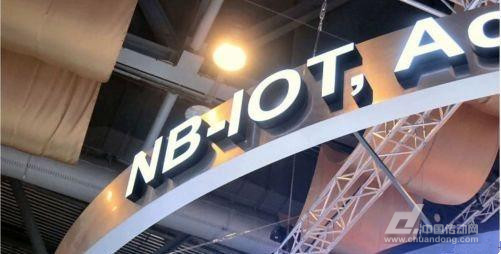At the industry-focused MWCS 2017 conference, China's three major operators released their own IoT strategies at MWCS2017. The entire mobile communications industry has obtained a new development path beyond higher speeds and greater capacity: a richer access method. Compared with the traditional cellular IoT technology, the new cellular IoT technology has the advantages of narrower occupied bandwidth, fewer resources, reduced power consumption and complexity, longer battery life, and the ability to realize deeper in the existing LTE network. Wide coverage.

China Mobile held the Mobile Internet of Things Conference, released its Internet of Things development plan, and announced the establishment of the China Mobile Internet of Things alliance. As of the end of May this year, China Mobile’s number of IoT connections exceeded 120 million, making it the world’s largest Internet of Things connection provider. China Mobile stated that it plans to add 100 million IoT smart connections throughout the year and push the total scale to 200 million. In terms of NB-IoT and eMTC, China Mobile is committed to promoting the coordinated development of NB-IoT and eMTC in a coordinated manner, and will comprehensively promote the “end-to-management-cloud†approach to create the strongest mobile IoT ecosystem in the industry.
China Telecom has released an open platform for the Internet of Things. The platform is composed of three parts: connection management, application enablement, and vertical service. Globalized, secure, and reliable end-to-end services have always had three major advantages: First, global connectivity, One point of service; the second is open innovation, security and credibility; the third is data perception, intelligent decision-making. China Telecom will rely on the open platform of the Internet of Things to learn from industry experience, integrate internal resources, and unite with global partners to build core competitiveness and create commercial value.
China Unicom, at its international partner conference, released a new generation of connectivity management platform for the Internet of Things. At the same time, it also announced the “global connection†collaboration initiative for the Internet of Things. China Unicom is advocating cooperation between global operators and the Internet of Things industry chain. Partners accelerate their actions and build long-term communication and collaboration mechanisms based on the principles of “fairness, equality, and negotiation†and work together in a more “open, inclusive, and trustworthy†manner to build the “global connectivity†capability of the Internet of Things, especially in connection with Platform interoperability, eSIM platform construction and application and efficient cooperation mechanism will be strengthened in three aspects, and the global IoT deployment will be accelerated to jointly create new value in the era of “all things connectedâ€.
From a global perspective, many mainstream mobile operators including AT&T, Deutsche Telekom, Verizon and Vodafone have introduced low-power wide area network (LPWA) commercial solutions one after another. The GSMA-sponsored mobile Internet of Things project has attracted widespread attention. China Mobile and China Unicom in certain key cities, China Telecom has commercialized NB-IoT network nationwide, Vodafone launched NB-IoT networks in Spain and the Netherlands, DT in several German cities, and the entire country of the Netherlands, while AT&T and Verizon Previously, it has also announced the deployment of a network using LTE-M technology in the United States. In addition, the GSMA stated that its mobile IoT innovator project has more than 500 members, highlighting the proliferation of the Internet of Things and the broader IoT ecosystem, which is designed to promote the development of new LPWA solutions.
In May 2017, China Mobile Research Institute and Qualcomm and Mobike announced the launch of China's first eMTC/NB-IoT/GSM (LTECat-M1/NB1 and E-GPRS) multimode field test. The field test program took full advantage of China Mobile's 2G/4G multimode network and applied Qualcomm's MDM9206 global multi-mode LTE IoT (Cat-M1/Cat-NB1) modems for IoT applications to Mobike's smart car locks. Compared to GSM, LTEIoT offers superior performance and battery life. China Mobile has the advantages of 2G network scale and Cat-NB1/Cat-M1 technology. It can provide ubiquitous object-connected solutions. With the help of China Mobile's basic communications suite and OneNET platform, it can realize the protocol adaptation of various devices and sensors. With rapid access, China Mobile's new Internet of Things has helped the development of shared bicycles.
The tests of the China Mobile Research Institute and Mobike bicycles marked a major step forward for wireless technology and service leaders to bring the advantages of global multimode LTE IoT to millions of users and enterprises, and further promote the Internet of Things ecosystem. Moving forward will also make users' lives more convenient.
Litecoin is an online currency based on peer-to-peer technology and is an open source software project under the MIT/X11 license. It can help users make instant payments to anyone in the world [2]. Litecoin was designed and programmed by a programmer (Li Qiwei) who used to work at Google, and launched on January 9, 2011. Litecoin is an improved digital currency inspired by Bitcoin. The technical principle of Litecoin is the same as that of Bitcoin. It also adopts a decentralized architecture, without any central authority control, and the issuance of new coins and the transfer of transactions and payments are based on open source encryption algorithms, etc. These are all imitated the design principle of Bitcoin. However, Litecoin tries its best to improve the shortcomings that Bitcoin has shown before, such as too slow transaction confirmation, small total cap, the emergence of large mining pools caused by proof-of-work mechanism and so on, SHA256 algorithm [1].
Litecoin, which aims to improve Bitcoin, has three significant differences. First, the Litecoin network can process a block every 2.5 minutes instead of 10, thus providing faster transaction confirmation. Second, the Litecoin network is expected to produce 84 million litecoins, four times the amount of money issued on the Bitcoin network. Each litecoin is divided into 100 million smaller units, defined by eight decimal places.
Litecoin Mining Machine:Bitmain Antminer L7,Goldshell Mini-DOGE Pro,Goldshell LT Lite,Innosilicon A4+ LTCMaster,Goldshell LT5,
Bitmain Antminer L3+ (504Mh),Bitmain Antminer L3+ (600Mh),etc.
Litecoin Mining Machine,L3 Miner,Antminer L7,Ltc Mining Machine,Scrypt
Shenzhen YLHM Technology Co., Ltd. , https://www.sggminer.com
